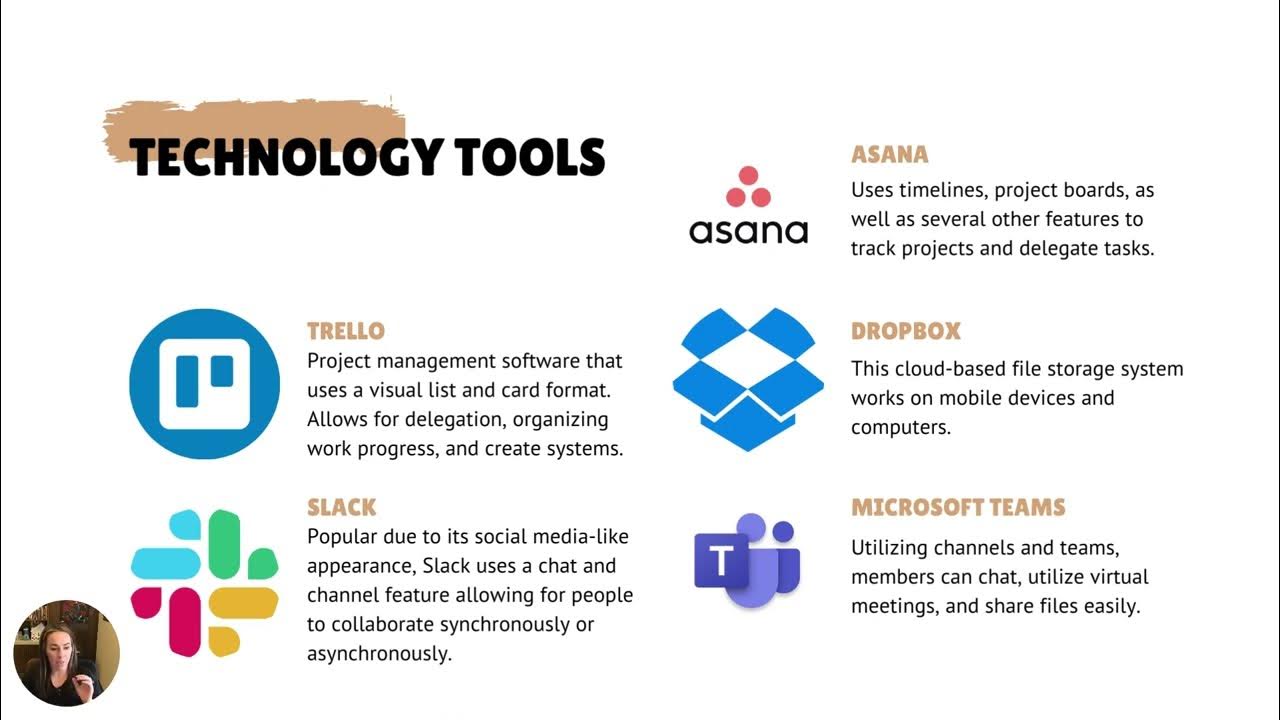Hybrid Teams Podcast Part two
Summary
TLDRIn this engaging episode of the Hybrid Teams Podcast, experts discuss strategies for effective virtual collaboration and leadership in remote work environments. The conversation covers tools like Microsoft Teams and Jira for digital organization, tips for managing team fatigue from back-to-back meetings, and the importance of creating an inclusive, flexible work culture. The speakers emphasize human needs such as autonomy and relatedness, sharing practical advice for virtual team leaders to foster trust, engagement, and innovation. The episode highlights the significance of relationships, support, and adaptability in successful hybrid work environments.
Takeaways
- 😀 Emphasize the importance of being in front of a computer during virtual meetings to level the playing field and promote inclusion.
- 😀 Virtual meetings require more structure to ensure effective communication and reduce misunderstandings in a remote environment.
- 😀 The shift to remote work demands new skills for leaders and virtual supervisors to better communicate and manage teams.
- 😀 Tools like Microsoft Teams and its planner plugins can help organize work, track progress, and encourage collaboration within teams.
- 😀 Teams can use Kanban-style boards and lean methodologies to track work progress and facilitate smoother workflows.
- 😀 Moving away from email-based document management to collaborative spaces like Teams can reduce document versioning issues and enhance teamwork.
- 😀 Video fatigue is a growing issue with back-to-back meetings, and creating short breaks between meetings can help manage this.
- 😀 Adjusting meeting lengths to include a buffer (e.g., 50 minutes instead of an hour) can help reduce stress and improve productivity.
- 😀 Introducing short gratitude circles or check-ins at the end of meetings can provide a mental break and improve team morale.
- 😀 Virtual teams often have more opportunities for flexible, innovative working practices, such as collaborating across different ministries or locations, promoting diversity and inclusion.
Q & A
What are some key tools discussed for connecting with virtual teams?
-The key tools discussed include Microsoft Teams, specifically its planner plugin and team boards, which are useful for organizing work, tracking tasks, and facilitating collaboration. Additionally, Jira is mentioned for managing complex tasks and tracking issues, risks, decisions, and actions in real time.
What was Jillian’s experience with Microsoft Teams and how did it benefit her team?
-Jillian shared that she became a big fan of Microsoft Teams, particularly using the team boards to track work and collaborate on projects. It allowed her to reduce assumptions and fostered real-time collaboration, which improved team communication and the efficiency of their work.
Why is it important to avoid back-to-back virtual meetings, according to Jillian and Avril?
-Both Jillian and Avril highlighted that back-to-back virtual meetings can lead to fatigue, reducing productivity and focus. They suggested implementing short breaks between meetings, either by shortening meeting times or introducing quick reflection periods to help reduce exhaustion and maintain engagement.
How can virtual supervisors support their teams more effectively?
-Virtual supervisors should focus on building trust and relationships with their team members. It is crucial to recognize that employees crave autonomy, relatedness, and competence. A good supervisor will coach, support, and get to know their team, fostering engagement and trust to enhance performance.
What does the research say about team engagement in virtual versus physical teams?
-Research suggests that people working in virtual teams are often more engaged than those in physical teams. The key factors for high engagement are being part of a team and having trust in one's supervisor, which can be fostered more effectively in virtual environments when properly supported.
What advice did Jillian offer about leading virtual teams in a human-centered way?
-Jillian emphasized the importance of seeing team members as humans with psychological needs for autonomy, relatedness, and competence. Leaders should focus on forming strong relationships, understanding individual needs, and fostering a supportive and trusting team environment.
What strategies were suggested for overcoming virtual work fatigue?
-Strategies to manage virtual work fatigue include booking shorter meetings with brief breaks, using a default setting in Outlook to adjust meeting times, and incorporating 'gratitude circles' or mental breaks at the end of meetings. These approaches help reduce stress and improve focus.
Why is autonomy so important for virtual workers, and how can leaders promote it?
-Autonomy is vital for virtual workers because it gives them control over when and where they do their work. Leaders can promote autonomy by giving team members the freedom to manage their tasks and schedules while maintaining open lines of communication and support.
How does practicing new tools and techniques contribute to team growth in virtual settings?
-Practicing new tools and techniques helps team members become more comfortable with virtual work. Encouraging a culture of continuous learning and experimentation allows teams to adapt, improve, and innovate without fear of making mistakes, leading to greater collaboration and productivity.
What role does flexibility play in virtual team dynamics?
-Flexibility is essential in virtual teams as it enables employees to adapt to changing circumstances, such as shifting meeting times or adjusting workspaces. Leaders should embrace this flexibility to support employees' varied work preferences and needs, enhancing overall team performance and morale.
Outlines

Esta sección está disponible solo para usuarios con suscripción. Por favor, mejora tu plan para acceder a esta parte.
Mejorar ahoraMindmap

Esta sección está disponible solo para usuarios con suscripción. Por favor, mejora tu plan para acceder a esta parte.
Mejorar ahoraKeywords

Esta sección está disponible solo para usuarios con suscripción. Por favor, mejora tu plan para acceder a esta parte.
Mejorar ahoraHighlights

Esta sección está disponible solo para usuarios con suscripción. Por favor, mejora tu plan para acceder a esta parte.
Mejorar ahoraTranscripts

Esta sección está disponible solo para usuarios con suscripción. Por favor, mejora tu plan para acceder a esta parte.
Mejorar ahora5.0 / 5 (0 votes)






